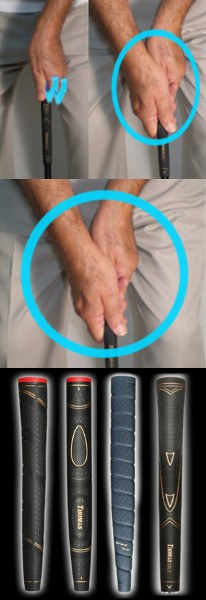Proper Golf Swing Starts With the Grip Part 1

Let’s be honest – the golf grip is not the most exciting part of the game. In fact, many golfers will play their entire lives without giving much thought to the grip at all. Plenty of players just grab onto the club, take a stance, and make a swing. Unfortunately, that isn’t a strategy that is likely to be effective. Good golf requires more attention to detail than that, so if you have designs on becoming a better golfer, the grip is something that you are going to want to pay close attention to. As your only connection between your body and the club, the grip plays a vital role in hitting good shots.
Discussion about the golf grip can be divided into two categories – how your hands form the grip, and the actual grip on your club. Golf grip tips that help you find the perfect golf grip generally are focused on how you use your hands to create the perfect golf grip, but it is also important to pay attention to the various golf grip types available and which one will work best for you. Having the right golf grip size on your clubs, and making sure your grips are in good condition, is a detail worth paying attention to.
At this point, your grip is probably something that you don’t think about too often. It likely feels comfortable as is, so you might not thing that there is any reason to make a change. However, you might have more problems hiding in your grip than you realize. The following issues might point to a hidden problem within your grip that needs to be addressed –
There might be more exciting things you could do at the driving range than work on your grip, but it is something that needs to be addressed. By taking the time to breakdown your grip and confirm that it is technically sound, and also to confirm that the grips on your clubs are the right size and in good condition, you will be taking out yet another variable from the golf equation. Once your grip is sorted out, you can move on to other areas for potential improvement.





